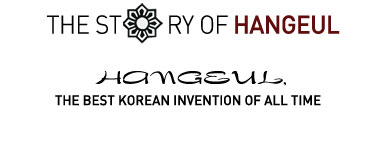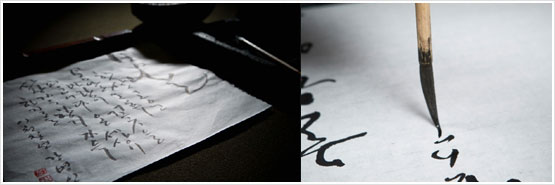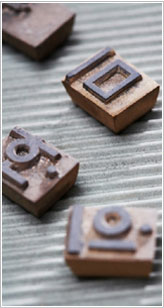
 Koreans take pride in their alphabet. They believe that Hangeul best demonstrates the creativity of Koreans during the past 5000 years of Korean civilization. Koreans mark the 9th of every October as a national celebration to commemorate the creation of Hangeul. As the only national celebration for an alphabet in the world, this day reflects the uniqueness of an alphabet created and systematized by a government to reflect the unique sounds of a language.
Koreans take pride in their alphabet. They believe that Hangeul best demonstrates the creativity of Koreans during the past 5000 years of Korean civilization. Koreans mark the 9th of every October as a national celebration to commemorate the creation of Hangeul. As the only national celebration for an alphabet in the world, this day reflects the uniqueness of an alphabet created and systematized by a government to reflect the unique sounds of a language.King Sejong, the creator of Hangeul, is regarded as a national hero in Korea. There are in fact only two kings commemorated as truly great kings of Korean history. One is Gwanggaetodaewang of Goguryeo, who ruled over the largest territory in Korean history, and the other is King Sejong, who created hangeul and many other significant inventions. King Sejong appears on the 10,000 won note and a statue of him stands at Gwanghwamun Square, which is a symbol of Seoul.
 Consonants and vowels are used to write words by crossing and addition. 12,768 phonemes can be made in this way however, it is easy for everyone to learn Hangeul because the composition principle of the words is so simple. Based on the desire to create a writing system that could be easily learned and accessed by all people throughout Korea, King Sejong worked to invent and distribute this alphabet throughout the nation. Because of this, the illiteracy rate in Korea is now virtually zero.
Consonants and vowels are used to write words by crossing and addition. 12,768 phonemes can be made in this way however, it is easy for everyone to learn Hangeul because the composition principle of the words is so simple. Based on the desire to create a writing system that could be easily learned and accessed by all people throughout Korea, King Sejong worked to invent and distribute this alphabet throughout the nation. Because of this, the illiteracy rate in Korea is now virtually zero.
Hangeul was named Hunminjungeum at the time of its creation. Hunminjungeum means “ Correct Sounds to Instruct the People ”. The Hunminjungeum Explanation Book King Sejong created has been passed down throughout history; the Korean government has named it National Treasure No. 70 and it is now housed at the Gansong Art Museum in Sungbuk-dong, Seoul.
The quality of Hangeul has been extensively studied and praised by experts worldwide. In 1989, UNESCO initiated the King Sejong Literacy Prize, which is awarded to an individual or group, which contributes to the crusade against illiteracy. This award has been bestowed since 1990. In addition, UNESCO selected the Hunminjungeum Explanation Book as a Memory of the World in 1997.
Artwork utilizing the geometric features of the Korean alphabet has recently become a hot item. One typical example is the work of the fashion designer Sang Bong Lee. Lee received many compliments on the oriental yet modern clothing she has created using the images of the Korean alphabet while exhibiting at the pret a porter collection presentation in Paris.
Source : visitkorea.or.kr


No comments:
Post a Comment